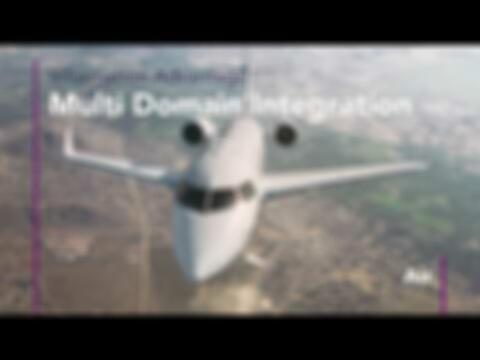The Future of Integrated Battlefield Systems
Modern warfare demands seamless integration across land, maritime, and air platforms, headquarters, embassies, and operational teams. As military operations become increasingly complex and data-driven, achieving true interoperability presents a range of technical, environmental, and operational challenges. Leidos recently sponsored the Future Soldier Technology 2025 Conference, held in March in London, discussing how to enable collaboration on the battlefield.
Delivering Integrated Solutions
True integration goes beyond cutting-edge technology – it’s driven by the expertise, collaboration, and synergy of engineers, scientists, and project teams. The real value lies in people, bringing together multi-skilled teams, fostering strong partnerships, and maintaining a culture of transparency and agility. This enables a streamlined approach with a “one team” shared vision, ensuring that technological solutions are not just advanced but also practical and deployable in real-world scenarios.
The Battlefield Advantage
By integrating diverse capabilities, such as full-motion video (FMV) transmission, secure chat, Radio over Internet Protocol (ROIP)/Voice over IP (VOIP) communication, tactical data links, open-source intelligence, and cross-domain solutions, soldiers gain access to a fully connected battlefield. This ensures that critical information reaches the right person at the right time, facilitating faster, more informed decision-making, whilst ensuring that forces remain agile and responsive in high-pressure scenarios.
Overcoming Environmental Integration Challenges
Integrated battlefield systems must address critical challenges in power management, signal interference, and environmental resilience. A flexible, modular power strategy is essential, incorporating stored energy, scavenging from multiple sources, and self-generated power (such as solar, fuel, hand crank, or a combination). These solutions ensure sustained operations even in the most austere environments.
Beyond power concerns, equipment placement and electromagnetic compatibility (EMC) considerations are crucial to maintaining operational effectiveness. Systems must be carefully mounted to avoid interference with soldiers' duties, while adhering to RADHAZ (radiation hazard) safety requirements to protect sensitive systems such as weapons, fuel, and medical devices. Failure to address these factors can compromise both mission success and personnel safety.
Additionally, battlefield systems must be designed to withstand extreme conditions. From the scorching heat of deserts to the freezing temperatures of Eastern Europe, equipment must remain reliable and functional. Weatherproofing, ruggedized enclosures, and adaptive cooling or heating mechanisms play a vital role in ensuring system resilience. Overcoming these challenges is key to maintaining mission readiness and achieving operational success.
The Next Step in Military Integration
By bringing together land, air, and sea platforms into a connected "system of systems," Leidos empowers soldiers with enterprise-level intelligence at their fingertips. A fully integrated network enhances decision-making by delivering real-time, actionable insights to commanders and personnel on the ground.
Beyond technology, successful integration hinges on seamless collaboration between diverse disciplines, including cyber specialists, electronic warfare experts, and logistics professionals. This multidisciplinary approach ensures not only the effectiveness of integrated systems but also their longevity and adaptability in an ever-evolving battlefield landscape. With the right combination of advanced technology and expert coordination, military forces can achieve unparalleled operational efficiency and superiority in modern warfare.




